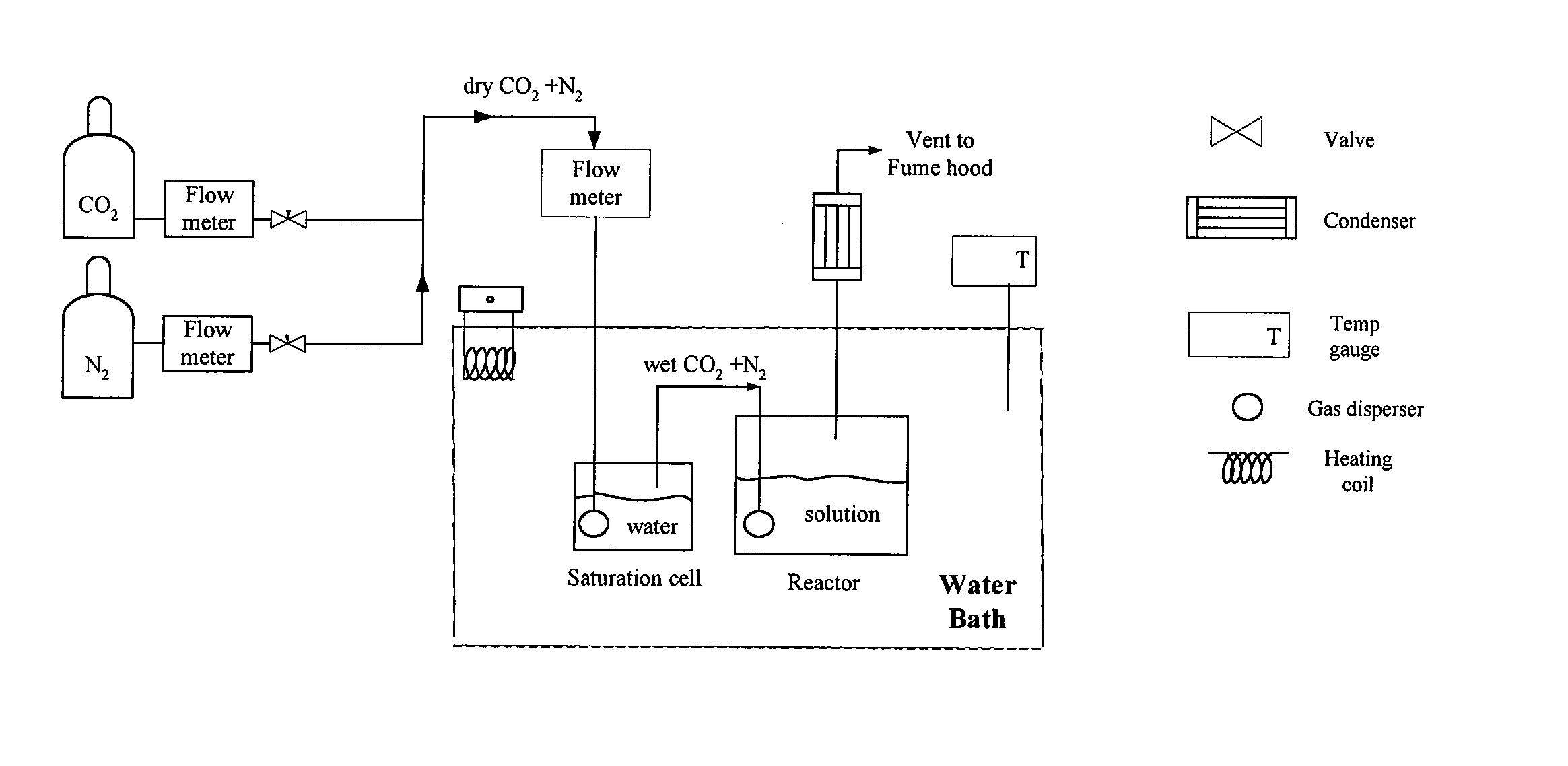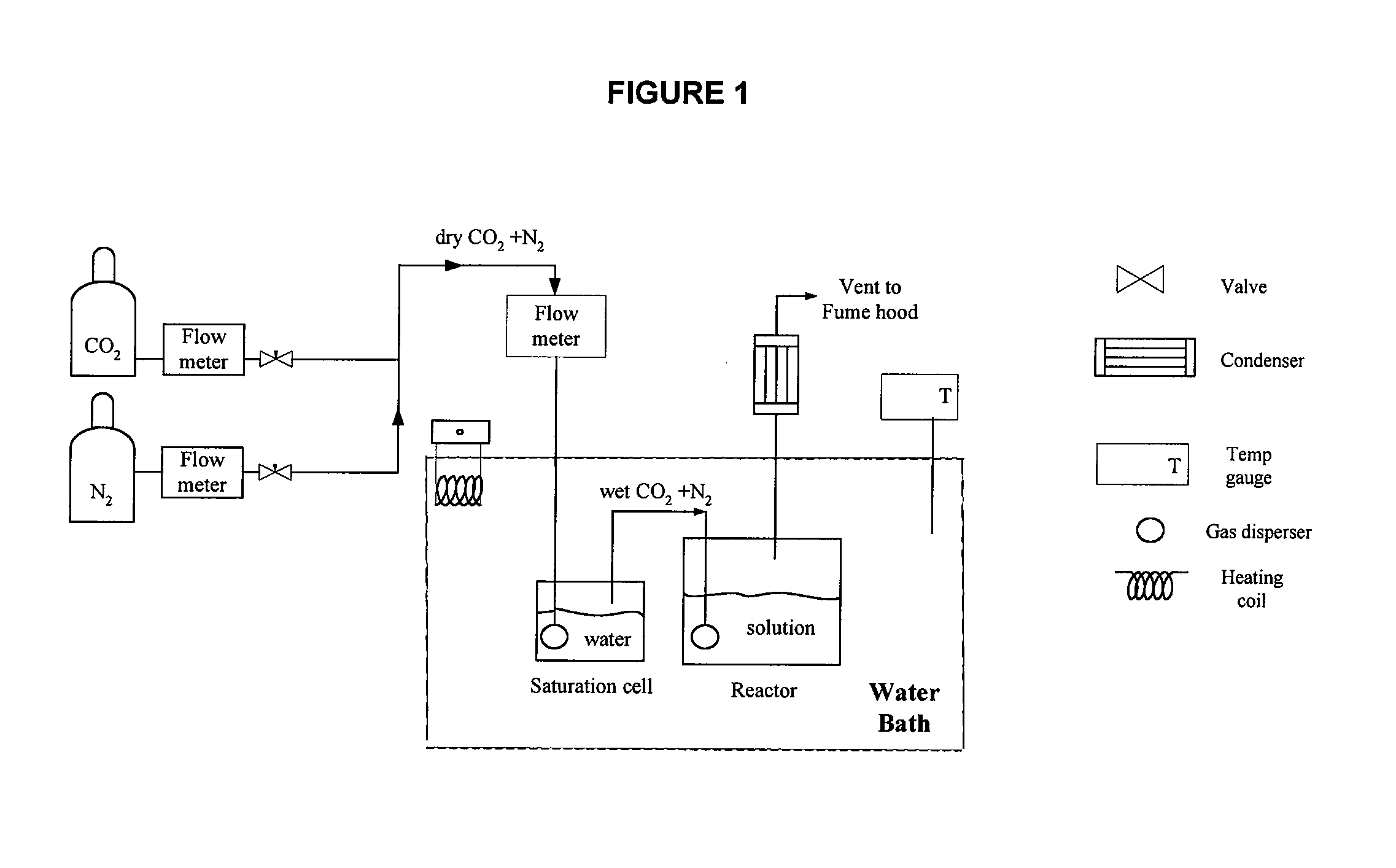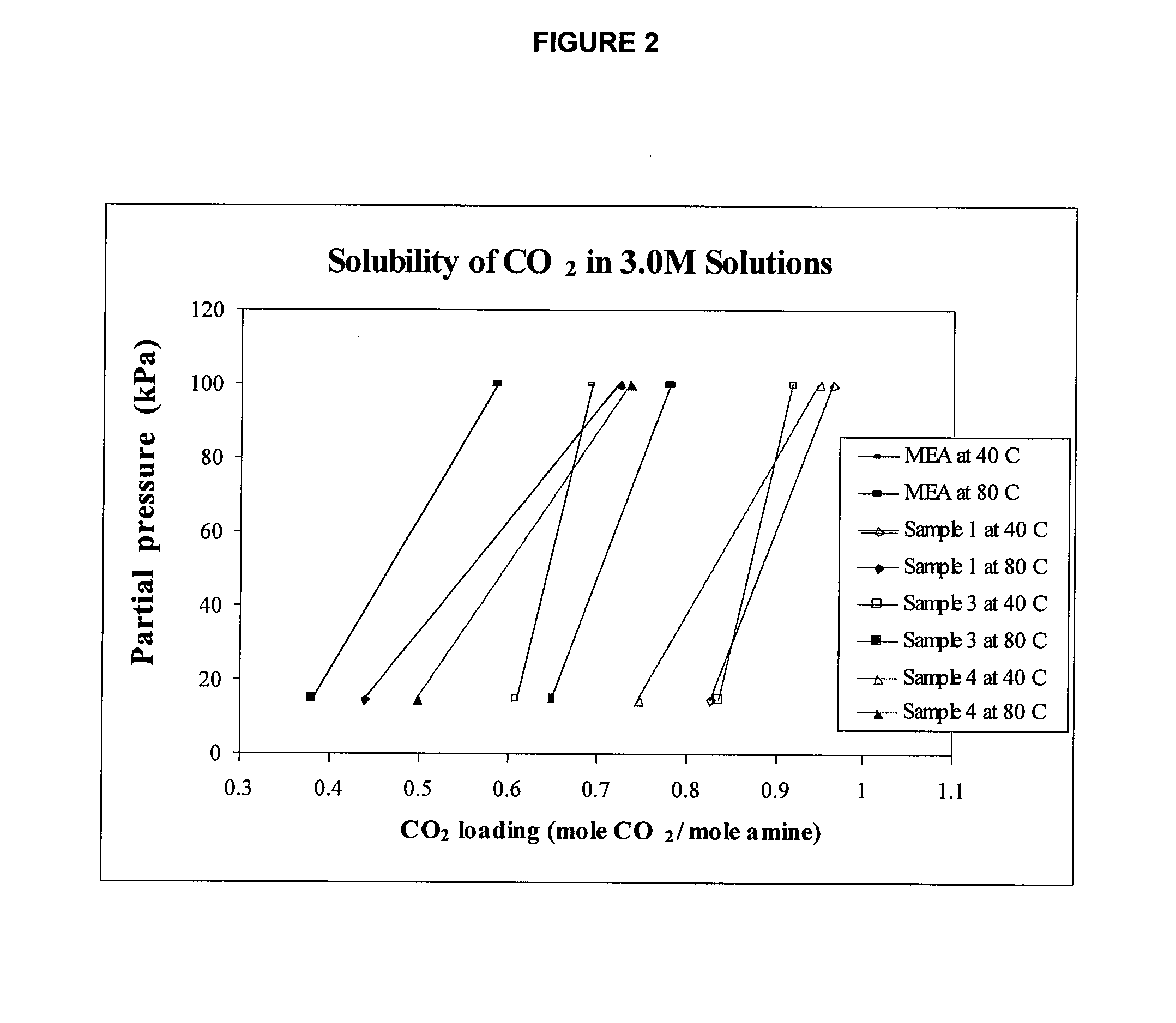Method of capturing carbon dioxide from gas streams
a technology of carbon dioxide and gas stream, which is applied in the direction of hydrogen sulfide, separation processes, sulfur compounds, etc., can solve the problems of difficult to perform the process of capturing co2 /sub>efficiently from gas streams, and cannot be dealt with using conventional technology, so as to achieve superior co2 absorption and cyclic capacity
- Summary
- Abstract
- Description
- Claims
- Application Information
AI Technical Summary
Benefits of technology
Problems solved by technology
Method used
Image
Examples
experimental examples
Example 1
Synthesis of the amino alcohol 4-(diethylamino)-2-butanol (1)
[0045]
[0046] Methyl vinyl ketone (65 mL, 0.71 mol) was added dropwise to ice-water cold neat diethylamine (70 mL, 0.68 mol). After addition was completed in 1 h, the cooling bath was removed and the solution was stirred at room temperature for 3 h. It was diluted with 30 mL of methanol and then cooled in ice water. Sodium boron hydride (26 g, 0.68 mol) was added slowly. Cooling was removed after the addition was completed in 1 h. The stirring was continued at room temperature for 3 h, at which time 30 mL of saturated sodium chloride was added and the mixture was stirred for additional 1 h. The color of the solution turned from green dark into wine red. The formed solid was filtered off through Buchuel funnel, and washed with dichloromethane. The organic layer was separated and the aqueous layer was extracted with dichloromethane (x3). The combined organic layers were dried (Na2SO4), filtered and concentrated und...
example 2
Synthesis of the amino alcohol 4-(morpholino)-2-butanol (2)
Comparative Example
[0047]
[0048] Expansion of the protocol in Example 1 to 4-(morpholino)-2-butanol (2) was accomplished by simply changing the diethyl amine to morpholine. IR νmax: 3075-3600 cm−1; 1H NMR, δ (200 MHz, CDCl3): 0.90 (d, 3H, J=6 Hz), 1.15-1.50 (m, 2H), 2.05-2.45 (m, 6H), 3.42 (t, 4H, J=4.6 Hz), 3.60-3.78 (m, 1H), 5.22-5.36 (br s, 1H).
example 3
Synthesis of the amino alcohol 4-(isopropylamino)-2-butanol (3)
[0049]
[0050] Expansion of the protocol in Example 1 to 4-(isopropylamino)-2-butanol (3) was accomplished by simply changing the diethyl amine to isopropylamine. IR νmax: 3075-3600 cm−1; 1H NMR, 6 (200 MHz, CDCl3): 0.85 (d, 6H), 1.04 (d, 3H, J=6.2 Hz), 1.20-1.56 (m, 2H), 2.41-2.94 (m, 3H), 3.75-3.92 (m, 1H) (NH and OH not observed).
PUM
| Property | Measurement | Unit |
|---|---|---|
| Temperature | aaaaa | aaaaa |
| Temperature | aaaaa | aaaaa |
| Temperature | aaaaa | aaaaa |
Abstract
Description
Claims
Application Information
 Login to View More
Login to View More - R&D
- Intellectual Property
- Life Sciences
- Materials
- Tech Scout
- Unparalleled Data Quality
- Higher Quality Content
- 60% Fewer Hallucinations
Browse by: Latest US Patents, China's latest patents, Technical Efficacy Thesaurus, Application Domain, Technology Topic, Popular Technical Reports.
© 2025 PatSnap. All rights reserved.Legal|Privacy policy|Modern Slavery Act Transparency Statement|Sitemap|About US| Contact US: help@patsnap.com



